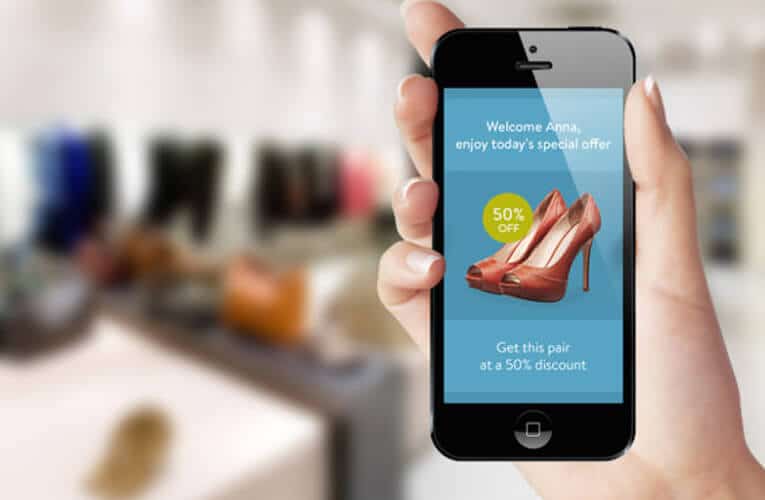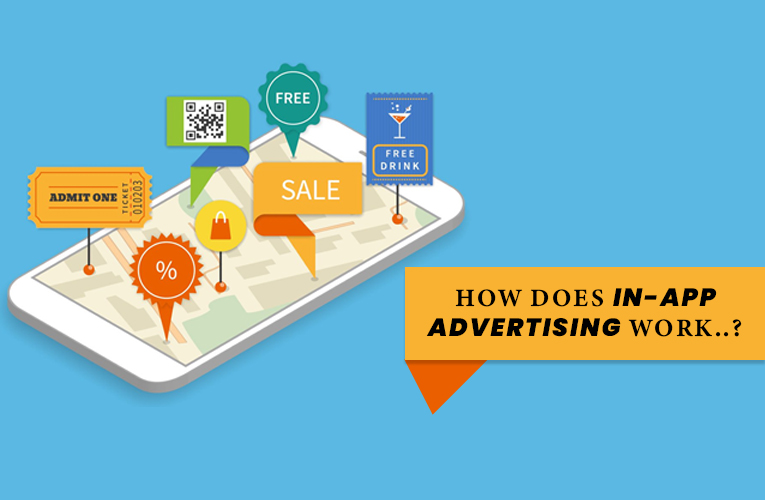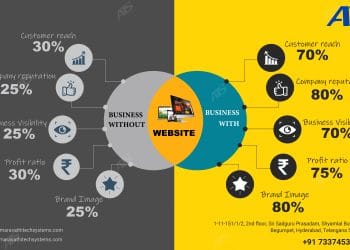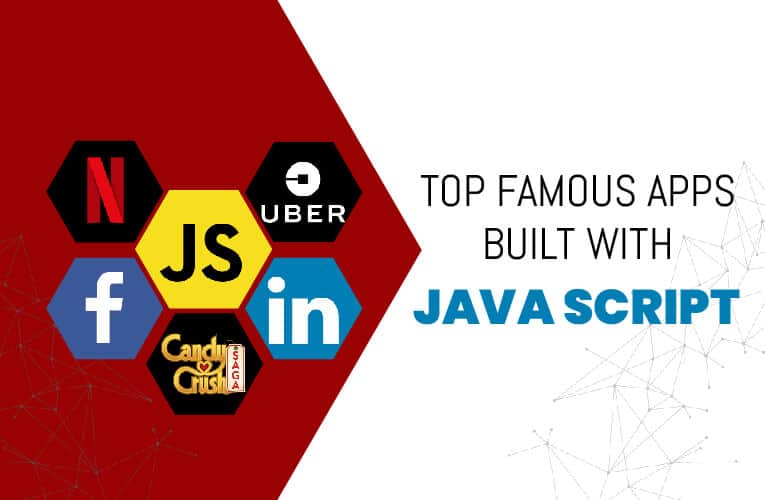In-app advertising is one of the big and most valuable marketing platforms for modern brands, allowing smartphone users to spend 90% of their time in games, versus 10% on mobile Webs. Unfortunately, you might feel like springing into the deep end of a pool when you take your first steps into the area. As mobile technology increases, advertisers just have more possibilities, yet a wealth of technical jargon can be daunting.
The marketer must first understand the in-app ads or levels of technology that allow something to be done, to better understand and realize its full potential. The complete ecosystem will contribute to the mutually beneficial achievement of developers and marketers, but this begins with a high degree of understanding of the entire environment.
So, who’s now involved in getting an ad to appear in an app?
- On the advertiser side: A seller will create mobile app ads and will either have its team members and/or a creative agency to bring the creatives together to use. Thereafter, a demand-side platform (DSP) can incorporate various advertisers’ innovative and campaign items and then work to ensure the app’s publishers are offered.
- On the app publisher side: Developers and app owners can incorporate a supply-side platform (SSP) that adds up publisher supply with an advertiser demand source. This integration generally occurs via an SDK, but often through an application programming interface (API).
- An ad network is a bridge between the two sides: A network of advertisers links advertisers and their partners to publishers and their partners to ensure that lots of brands can reach a target audience across a range of apps.
WHAT LAYERS MAKE UP THE IN-APP STACK?
Thanks to the traditionally well-developed connections between consumers, marketers, and publishers established by the web advertising environment at the earliest times, the structure of the app stack remains fairly consistent across mobile platforms. That said, there are some special aspects of the in-app stack that distinguish it. The layers include, from the bottom up,
- Mobile Distribution Platforms.
- Development Environments.
- Analytics & Measurement Platforms.
- Backend and Liveops Services.
- Marketing Automation Tools.
- Advertising Networks.
- Ad Mediation Solutions.
In this article, we will analyze every layer more closely to emphasize its role in making in-app publicity such a valuable opportunity for modern brands.
- MOBILE DISTRIBUTION PLATFORMS
EXAMPLES:
- iOS – The Apple App Store
- Android – Google Play
The basis of the app stack begins with mobile delivery platforms, which enable users to search and download applications. Google Play and the app shop are the main outlets in terms of market share, but Microsoft and Amazon app stores are among other things part of that layer.
The amount of time and attention modern audiences spend on the apps accessed via those channels is the most critical for advertisers. A new report from Newzoo predicts that 3.8 billion people, or almost half of the world’s present population, will use global smartphones in 2021. In addition to mobile web-based applications, mobile devices spend 90 percent of their time.
In summary, these two figures represent a significant incentive for publicity. Realizing this change begins with the tools we use to build the apps we know and love.
- DEVELOPMENT ENVIRONMENTS
EXAMPLES:
- Unity 3D
- Unreal Development Kit
- Java
- Objective-C
- Swift
This layer includes languages for programming, gaming engines, and integrated development environments for building apps that fill the above-described distribution channels. Around 50 percent of all gaming applications on mobile devices are based on the Unit engine, followed by the Unreal motor. However, apart from these two, most developers create apps that use native programming languages in each environment: Java for Android, or Objective-C/Swift for iOS.
Developer channels in a gaming eco-system may provide baked-in support for environmental ads. Unity, for example, provides an integrated promotional API for developing companies to monetize their games and applications without integrating SDKs from third parties. For smaller groups with a low level of advertising experience, the alternative is economically efficient and is backed up by official Unity support channels, but provides modest returns compared to complex ad operations involving multiple networks and/or mediation solutions.
Moving applications are aimed at mainstream markets, however, and it can be difficult to monitor what’s happening in your app without the right tools that take us to the next stack layer.
- ANALYTICS & MEASUREMENT PLATFORMS
EXAMPLES:
- GameAnalytics
- deltaDNA
- Adjust
- AppsFlyer
- Singular
- Tenjin
- Kochava
- Mixpanel
Continuing stacking, we are using the tools used to monitor user commitment and digital marketing data. The right tools allow publishers, including user-level data, to monitor almost everything from 2019. To optimize sales and decrease churn, developers calculate KPIs such as retention and average daily working user revenue (ARPDAU). Meanwhile, marketers are trying to better grasp demographic and behavioral data to get consumers.
Tools such as App Annie, Localytics, or Tenjin, analytics metrics are important to understanding the usage of apps and in-app ads by the customer. They serve as eyes, ears, and data from the top to the bottom for all the stacking technology. It also enables A/B product evaluations, the development of actionable insights, and the utilization of the most powerful monetization strategies for app marketers. These tooling devices unlock advanced targeting capabilities for marketers, calculate advertising returns and assign income to discrete player segments.
- BACKEND & LIVEOPS SERVICES
EXAMPLES:
- Firebase
- Playfab
- Amazon Game Tech
Backend services provide all features, such as account credentials, monitoring currency balance in a mobile game, and are not included in a mobile device operating system directly. Providers of mobile backend as an (MBaaS) services that bridge an app front with any backend features provide developer and advertiser with access to these resources. Google Firebase and Azure systems of Microsoft are prime instances.
Backend services are often underutilized by advertisers, although they may promote specific collaborations in the advertising sector, which can distinguish brands. While usually rare, one example is Sephora’s Puzzle Social campaign, during which the publisher’s Daily Celebrity Crossword application promoted a crossword puzzle branded by Sephora.
- MARKETING AUTOMATION TOOLS
EXAMPLES:
- Tapjoy
- Airship
- Leanplum
- Braze
These techniques assist advertisers in the management of customer relations. During the interaction of users with an app, automated processes may activate unique messages or functions periodically, such as ad printing or in-app purchasing offers. Developers may also use marketing automation software to provide push warnings for new promotions to audiences or to call back users after a period of inactivity. The push notifications averaged 7.8 percent CTR, which has risen since 2016 every year, are extremely valuable.
Marketers should learn more from whitepapers and reviews to understand how marketing automation tools like ours can help their customers achieve greater value.
- ADVERTISING NETWORKS
EXAMPLES:
- Facebook Audience Network
- Chartboost
- ironSource
- Unity Ads
- AdColony
Announcement networks are the link between the developer and the advertiser, often through an integrated SDK in the app. An ad network is designed to aggregate the advertising supply available, sell it to advertisers and meet ad demands by providing a creative strategy to the corresponding audience segments. This process can be scaled, optimized, and targeted in combination with marketing automation and media so that marketers maximize results while making the eCPM possible for publishers.
In our series of award-winning ads, through the offering wall, rewarded video, and playable goods, several of our partners provide these services alongside our other features such as mobile ad mediation.
- AD MEDIATION SOLUTIONS
EXAMPLES:
- ironSource
- MoPub
- Appodeal
Mediation allows app developers the freedom to prioritize the demand for ads from various ad networks and exchanges to ensure full print revenue. Publishers can handle the processes of their mediation manually, automatically, or through a hybrid model. Demand in a waterfall-based on pre-determined offers and agreed payment terms is given priority in the manual model. However, in 2019, several more publishers discover the advantages of programmatically handling ad monetization through a mechanism called header bidding, whereby various SDKs are offering advertising impressions in real-time, ensuring maximum revenue for publications.
Benefits of in-app advertising
And while this could rip news for the ad industry, for some time now mobile experts are watching the growing trend of app ads, generating a wealth of knowledge that highlights the huge advantages of in-app advertising.
Users are spending more time in their apps
Some years ago, smartphones dominated Facebook and Twitter, but today the industry looks very different. It’s not just social media, but a wide variety of applications across different verticals.
As a result, smartphone consumers progressively relocated to the wide range of available mobile apps using their mobile browsers.
For example, Facebook gained 41 percent of its total income from mobile apps in about 12 months, out of practically no mobile advertisement revenue. This enormous transition comes mainly from the rise in mobile ad formats and mobile video.
Higher click-through rates
Of course, in-app advertisement is more than hype, marketers want to educate.
In the beginning, the clicking rate of in-app ads is higher than web advertising.
The clicking rate for applications is 0.58 percent, according to Medialets, while mobile Web has only a CTR of 0.23 percent.
Another study revealed that in-application ads perform 11.4 times better than regular banner ads. Since CTR has a high correlation with leads and transformations, this is one of the main factors that businesses must target users in the app.
Better targeting
The thoroughly displayed advertisements in the app are shown inside the app, which means that ads usually seen in the browsers are more normal than interference.
Many applications also have interactive advertisements, which marketers can choose to view during the app experience at certain key points, ensuring that current app users can easily transition.
Moreover, advertisers have a very clear view of their customers as they sell inside apps. This is because of many factors, but mainly because of the ability of apps to draw direct demo and geo-location information. This allows the public to be closely associated with their marketing and promotional activities, which eventually encourage advertisers to get the best out of their advertisement campaigns.
3 Steps to Get Started With In-App Ads
There are a few main steps to get started when you are ready to monetize with advertising.

You need to pick an in-App Ad format and the type of campaign that you want to run, in addition to selecting an ad network.
- Choose an Ad Network
Mobile ad networks serve as an intermediary to link publishers with advertisers throughout the mobile advertising industry.
Google’s AdMob is one of the most common and largest ad networks, but it’s not the only one out there – the many ad networks are picked up by publishers and advertisers.
Ad networks vary in performance, ROI, target choices, supported channels and ad formats, and available campaign styles.
To choose the best ad network for your business, you need to know:
- Who you want to reach
- Where they are
- Your advertising goals
- Select the Right In-App Ad Format
The majority of mobile ad networks offer 5 main ad formats:
- Banner
- Interstitial
- Native
- Video
- Offer Wall
Other popular formats include playable and rewarded ads.
- Banner Ads
Banner ads, also known as display ads, can be the most common form of an ad for users. Typical text and/or pictures are shown in addition to the application content on top or bottom.
Banner ads can look intrusive and may disturb users who click on them accidentally. Indeed, 60% of all mobile clicks were considered accidental in one study.
- Native Ads
The most popular intrusive ad format is indigenous advertising. They are built to fit the app’s appearance and feel and seem to appeal to the app’s functionality or your interests.
For example, the above Instagram ad appears in the feed of a user with organic content and fits the look and feel of the platform’s typical content.
- Interstitial Ads
Interstitial advertisements are photos or videos that are shown during app transitions (for example between game levels) or (sometimes called full-screen ads).
- Video Ads
Promotional clips are video advertisements. Depending on the program, they may also be interstitial or native ads, as in the example above.
Video advertisements are generally attractive and have a high clicking rate (users like watching videos). Many users however find videos annoying, especially in cases where they can’t skip and/or have voice auto playback.
- Offer Wall Ads
Offer wall ads are normally a page in an app that provides and promotes different offers. The currency of the game, live, or other material may be included.
Often it costs a little while, whereas others inspire users to take action – such as viewing a video or installing an app.
- Playable Ads & Rewarded Ads
Other popular ad formats including playable ads and award-winning ads, particularly in-game apps.
A playable ad offers users the opportunity to play another game briefly for a few minutes. These are typically interstitial advertisements shown during game changes.
Rewarded advertisements, such as wall ads, allow users to view a video, download, use an app or do another thing in return for content on the game.
Every app is different, so you want to consider what works best for your application and your user experience when selecting a mobile ad format.
It is important to test a variety to see what works best for your app and your users. There are pros and cons to all of these ad styles.
Please note that advertising should be as discouraging as possible for your advertisers and their profits while they still drive performance.
- Select an Ad Pricing Model
For mobile application advertisement promotions, there are several common pricing models. Amongst the four most famous are:
- Cost per mille (CPM)
- Cost per click (CPC)
- Cost per action (CPA)
- Cost Per View (CPV) and Cost Per Install (CPI)
- Cost Per Mille (CPM)
CPM is an advertiser’s format in which an ad is shown every 1000 times to the publisher.
CPM is good for app publishers since ads only produce sales that need to be shown.
One possible drawback is that you will produce more revenue by charging per click or action instead of the advertisements, which suits your audience very well and you can discover that ads receive a large number of clicks.
- Cost Per Click (CPC)
Only when an ad is clicked does the advertiser pay in CPC. This is a better format for advertisers because they pay zero for click-free advertising.
For publishers, CPC may be a strong alternative to CPM. However, if advertisements are not clicked, you run the risk of giving away free impressions and not earning any revenues.
- Cost Per Action (CPA)
Advertisers only pay for clicks leading to a given action with CPA. This could include an application installation, a submission form, a website registration, or a newsletter registration.
For advertisers, this is a low-risk choice since they pay only for real results.
However, for editors, many announcements can be sent and loads of clicks can be generated without conversions being paid for.
- Cost Per View (CPV) and Cost Per Install (CPI)
CPV and CPI which are specifically for generating videos and app installations are other ad formats you can see in the region.
Although the pricing model is not the norm, CPM is mostly preferred by publishers as it appears to be the most consistent.
However, it will rely on the model that generates the most income for you:
- Your app
- Audience
- The advertiser and ad creative
- The offer
You’ll likely want to experiment with a few different models to see what your audience responds to.
In-App Ads vs Mobile Web Ads: What’s the Difference?
In-app ads appear in a smartphone app, as the name implies. This can range from a social app-supported post or a tweet, a banner, or a game video.
- In their apps, mobile web advertisements appear for users of the websites.
- Although mobile web ads still have a spot, advertising in the application has overtaken them in large part.
- More users choose applications, and features such as location data and advanced campaign analysis allow in-app advertising a very specific route for users to access and convert.
Mobile apps provide marketers with an immersive and competitive atmosphere that catches the attention of customers and encourages them to access and engage with advertising. Web websites and mobile applications have many similarities, but key elements distinguish them.
Here are some of the key differences between mobile websites and mobile apps:
| Mobile Websites | Mobile Apps | |
| Cookies | < Tracking Method > | Device ID |
| Web activity (e.g. shopping habits, favorite websites, etc.) | < Available User Data > | GPS location, device type, OS, gender, age, wireless carrier |
| Vulnerable to in-browser ad blockers | < Ad Blocking > | Ad Blocking technology has not advanced to universally block in-app ads |
| 25 minutes | <Average Daily Usage> | 3 hours 35 minutes |
Bottom line
Advertisers traditionally based their efforts on the in-app stack’s ad networks section. However, they have started to look more strategically at the whole of the application world in recent years. For example, the profound user data provided by analytical platforms are increasingly used to refine targeting and attribution by marketers. They prepare and distinguish their presence with developer marketing automation expertise. You may also programmatically bid for advertising space to optimize ROI. Some brands also work with software developers to exploit backend resources for placement in native publicity.












